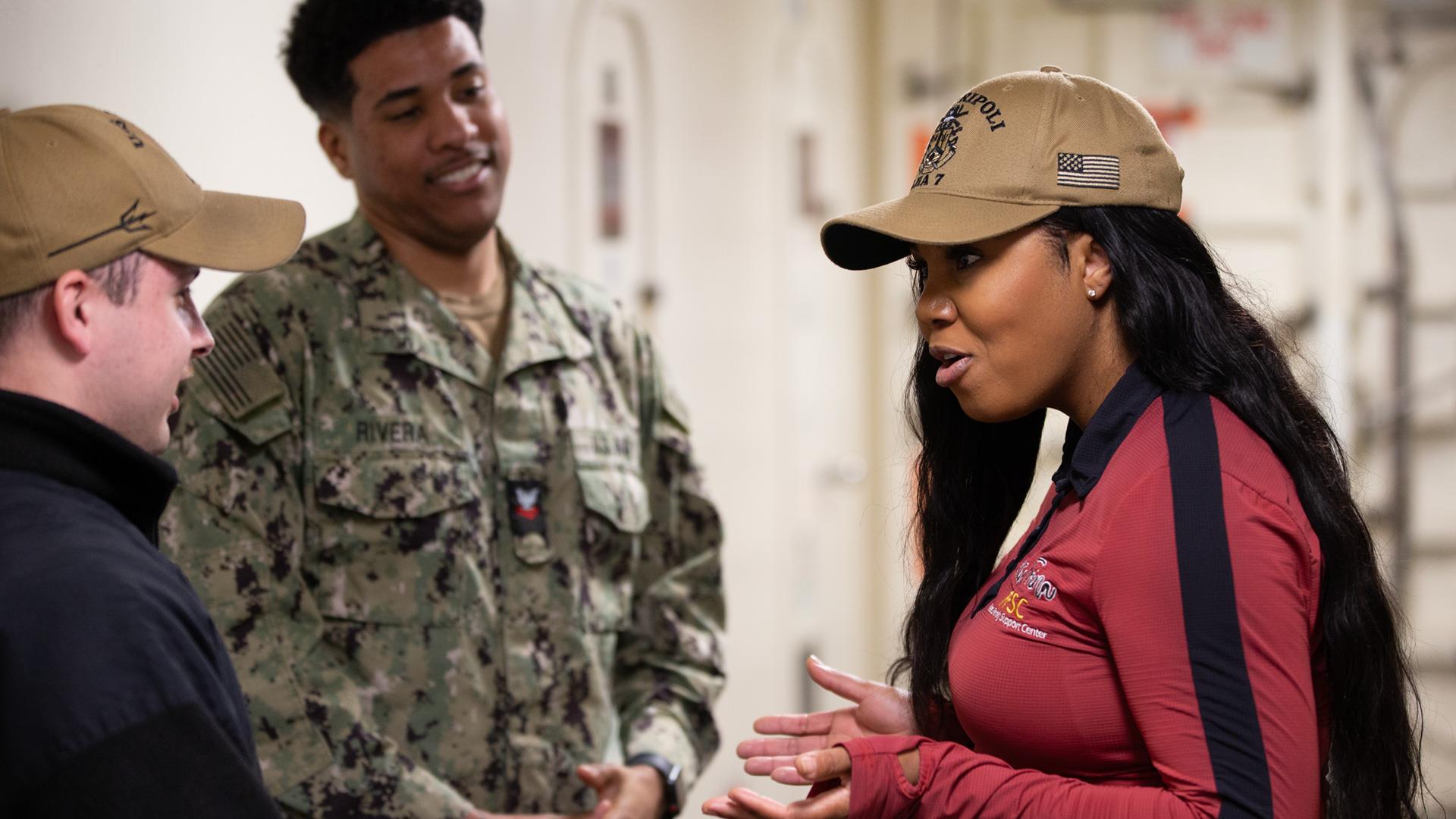Naval Base San Diego's Integrated Primary Prevention Program Making Waves of Change
By Naomi Wilkins, Commander, Navy Installations Command
WASHINGTON – Janet Paulovich, Commander, Navy Installations Command’s Fleet and Family Support Center Director at Naval Base San Diego (NBSD), has been a stalwart in the field for three decades. With her passion for integrated primary prevention, Paulovich and her dedicated team are transforming the way support is provided to Sailors and their families.
Paulovich helped launch the Integrated Primary Prevention (IPP) Program at NBSD in 2022, focusing on prevention education, equipping Sailors with essential coping skills, stress management techniques and suicide prevention awareness. She emphasizes the importance of getting ahead of issues by “instilling these crucial life skills, ultimately enhancing the quality of life for service members.”
One of the program's unique aspects is the provision of Deployed Resiliency Counselors (DRCs) and Embedded Integrated Prevention Coordinators (EIPCs) aboard aircraft carriers and amphibious assault ships, also known as “amphibs.” The DRCs have been a staple counseling service at NBSD since 2014 and EIPCs have been added within the last two years. Despite challenges such as the limited availability of DRCs, Paulovich ensures her team is trained and ready to go for extended periods, providing invaluable support to Sailors.
In a typical scenario at NBSD, a DRC is paired with an EIPC to simultaneously provide counseling and prevention services to four amphibs: the Boxer, the Tripoli, the Makin Island and the Essex. They deploy with the ship and work as a team. “It’s a beautiful model,” Paulovich proudly states. A second team of DRCs and EIPCs, primarily shore-based, provides the same services on the installation and pier side for various ships at NBSD An example of this is how the DRC in San Diego works with the Southwest Maintenance Center (SWMRC), as this is a very up-tempo area with a lot of pressure. Paulovich’s team provided a DRC, an EIPC, New Parent Support and more to combat the challenges faced at SWMRC.
The DRC and EIPC can also be deployed to smaller ships, like those in Expeditionary Strike Group 3, which comprises about 55-60 smaller ships. "We are the first to do it this way for smaller ships," Paulovich says. By pairing EIPCs with DRCs on smaller vessels underway that have requested services or are identified as having challenges, the program provides integrated prevention education plus counseling services. The goal is to support them with the same resources as the larger ships but for shorter periods of time. “I get all kinds of ‘thank yous’ from COs because of the immediate impact,” says Paulovich.
Jennifer Steinberger, an EIPC Supervisor at NBSD and part of Paulovich’s team, echoes the sentiment of community impact. In her role, Steinberger witnesses firsthand how the program builds community and positively affects individuals' lives. “As a supervisor, it’s about being able to take it to a larger scale, including expanding the program," she says. “I envision it expanding where we will eventually go on more ships. The program will be a known entity. If you go onto a ship everyone will know what a DRC and an EIPC are. In the future, I want people to be able to assume that there is a DRC and an EIPC on the ship as naturally as they would anything else on board,” Steinberger says. As NBSD’s IPP Program continues to make waves of change, Paulovich, Steinberger and their team are committed to providing unwavering support and guidance to Sailors in the area. “Because you’re embedded, because you are a part of the ship’s family, you touch lives every day. This is inspiring to me.” Steinberger says.
For DRC and EIPC jobs, please visit www.NavyMWR.org/Careers or www.USAJobs.gov or https://sandiego.navylifesw.com/careers




















